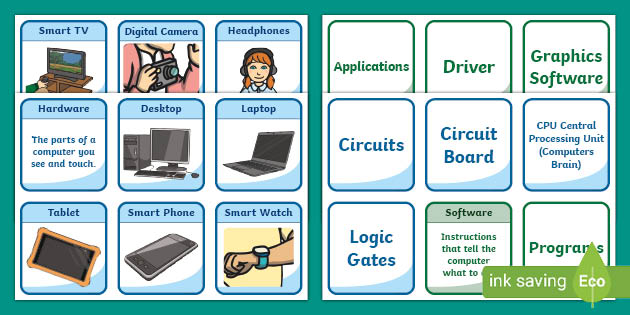Take a peak into the relationship between software and the hardware it controls.Start learning at Stay in touch with us!. on Twitter https:/. Learning Objectives. After this lesson, students will be able to: distinguish between computer hardware and software; discuss the purpose of each hardware part. ICT IGCSE Theory – Revision Presentation Chapter 1: Types and components of computer 1.1 Hardware and Software. Define hardware as consisting of physical components of a computer system. Identify internal hardware devices (e.g. Processor, motherboards, random access memory (RAM), read-only memory (ROM), video cards, sound cards and internal hard disk drives. Hardware designs are constrained by the need to incorporate standard parts. Specialized hardware components can have much longer lead times for acquisition than is true for software. Hardware design is driven by architectural decisions. More of the architectural work must be done up front compared to software products.
Hardware and software work together in digital devices and systems to provide computerized functionality. Hardware includes the physical components, such as the motherboard, chips, memory, and hard drives, while software includes the programs. Though both are most often associated with computers, software also runs on other hardware, such as cellular phones, personal digital assistants (PDAs), Global Positioning Satellite (GPS) units, medical equipment, and air traffic control systems. Modern cash registers are also computerized with software to better organize sales-related issues like inventory, tax, and coupon discounts.
Hardware And Software Difference
Hardware and software are constantly improving in a kind of leapfrog fashion. The former is most often the bottleneck when it comes to data transfer speeds, or how fast a program can work. Therefore, as hardware improves, it becomes capable of running more robust programs. Old hardware from just ten years ago may not run current software, as the programs might be designed to take advantage of hardware in ways that older pieces of equipment cannot support.

For this reason, when shopping for software, the buyer should check the specifications for recommended minimal hardware requirements. The central processing unit (CPU) of a computer is nearly always mentioned, as this hardware is responsible for the overall speed of the computer, generally speaking. The amount of Random Access Memory (RAM) is another factor, and graphics capability or video card requirements might also be mentioned.
Hardware And Software Ppt
If you would like to purchase software but are not sure what hardware you have, most operating systems have a built-in program for displaying hardware and software system information. In Windows XP, navigate by clicking the Start button, then All Programs, Accessories, System Tools, and System Information. You may want to print the initial system summary page, then click on the appropriate heading in the tree to the left to see new information displayed on the right. For example, click on “Components” then “Display” to see details about the video card in your computer.

